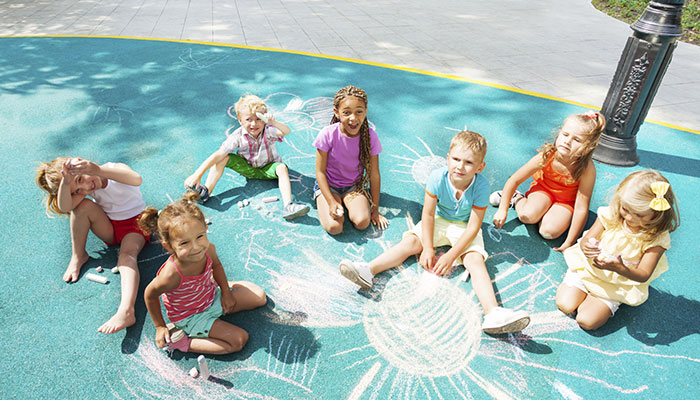While we believe that the books and resources recommended may be of value to you, keep in mind that these are suggestions only and you must do your own due diligence to determine whether the materials are appropriate and suitable for your use. PNC has no sponsorship or endorsement agreement with the authors or publishers of the materials listed.
WEATHER

Weather Clock
Children will observe and record the weather.

Lesson Objective
Children will make a weather clock and explain how the weather affects our daily lives.
Science
What You'll Need
- Dark cardboard or construction paper – 1 sheet per child
- White paper plates or white cardboard circles – 1 per child
- Scissors – 1 per child
- Paper fasteners – 1 per child
- Markers
- Chart paper
What To Do
Note: This is an ongoing activity for the children to observe and chart the daily weather.
- Begin a discussion about weather with the children (see Did You Know?).
- Ask the children to think about a symbol or image to describe what the weather might be like on a given day. Record the symbols or images on the chart paper (or allow children to draw them; such as a Sun for sunny days, umbrella for rainy days, clouds for cloudy days, snowflake for snowy days, cloud with wisps to indicate windy days).
- Demonstrate for the children how to draw weather symbols on the outside edge of the white circle, like a clock. Allow the children to draw their own images on their circles.
- Using the scissors, help the children cut two arrows from the dark cardboard (or construction paper).
- Assist the children with attaching the arrows to the centers of their circles with the paper fasteners.
- Show the children how to denote the weather of the day by pointing the arrows to the correct symbols.
- Invite the children to “set their clocks” to the appropriate weather at the beginning of each day.
Resources
Home School Resources
Home educators: use these printable lesson PDFs to teach this lesson to your home schoolers. They're available in English and Spanish.
Content Provided By
Common Core State Standards Initiative – These lessons are aligned with the Common Core State Standards ("CCSS"). The CCSS provide a consistent, clear understanding of the concepts and skills children are expected to learn and guide teachers to provide their students with opportunities to gain these important skills and foundational knowledge [1]. Visit the CCSS


